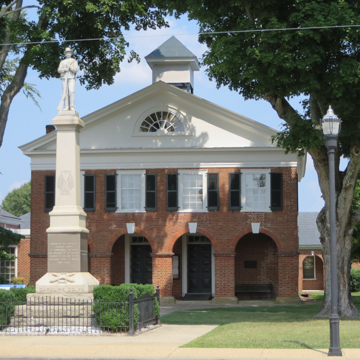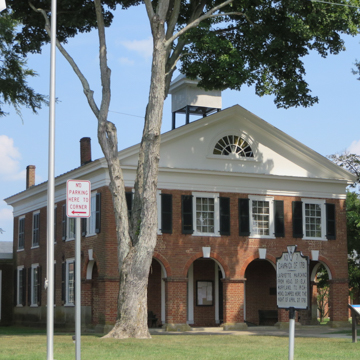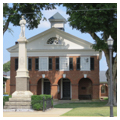Bowling Green is a county courthouse town that has grown following the traffic pattern along Main Street. The major interest is the Caroline County Courthouse (c. 1830, attributed to William B. Phillips and Malcolm F. Crawford; 1907, addition, William C. West), a temple-form, arcaded courthouse that follows the Jeffersonian tradition. Caroline County was established in 1727, and this may be its sixth county courthouse. Although no records connect Jefferson's builders, Phillips and Crawford, with this building, it closely resembles their Madison County Courthouse. The proportions have been altered from those used at Madison: the space is cramped between the arches and the second-floor windows. The square latticework belfry is probably not original. The courthouse is significant as the site of the original case that led ultimately to Loving v. Virginia and the landmark U.S. Supreme Court decision of 1967 that struck down laws banning interracial marriage. The usual auxiliary buildings surround the courthouse. A substantial Confederate monument (1906, J. Henry Brown), erected four decades after the end of the Civil War, stood in front of the courthouse until 2020, when it was dismantled for eventual re-erection in nearby Green Lawn Cemetery.
The town contains other nineteenth-century buildings, the most impressive being the Baptist Church (1898–1899, D. Wiley Anderson; later additions) in the Baptist low Gothic mode, which would have appalled a proper gothicist like Ralph Adams Cram. It is extremely colorful with its polychromatic roof tiles, wide nave, and exuberant tower sporting an incongruous window.



















